by Lux
Condenser Microphones typically sound better than dynamic microphones. If you are unfamiliar with these two types of microphones you may want to read about them in this Wikipedia article.
The short version is this:
Dynamic microphones have a coil and a magnet. So they act like little electric generators. They do not require external power such as a battery to operate.
Electret condenser microphones have to little plates (capacitor), one of which vibrates in the presence of sound. The varying capacitance is turned into an electrical audio signal by a tiny built in pre-amplifier. So this type of microphone needs an electric current to operate. Besides sounding good, condenser microphones typically have better sensitivity. Also condenser microphone elements are typically smaller than the dynamic type and many condenser microphone elements are very inexpensive.
If you have been thinking about experimenting with condenser microphone elements I would suggest this one.
As of today it is only $2.89.
I have an extra mic that is still in the package. On the back it has a tiny graph of the frequency response. If you go to the Shure microphone web site, you can look at the specs for there very popular SM58 microphone, The RadioShack mic’s upper frequency response actually looks flatter than the SM58 out to about 15 Khz. It would be helpful if the Radio shack graph had more resolution so we would know exactly where the upper frequency cut off actually is. It is actually well above the 10 Khz stated in the specs on the back of the package. Don’t get me wrong. The SM58 is a great microphone for live performances where the performer is belting out a tune with the mike almost touching their face. SM58s are really rugged. If you like to swing your microphone around by it’s mic cord and occasionally dropping it on the stage (Roger Daltrey) this is the microphone for you. I own two SM57s (same mic with a smaller wind screen). It just isn’t the right microphone for some applications such as DIY audio projects. By the way. The SM58 will set you back about $100. The Radio Shack mic is an ok vocal mic but a really good area mic. If you want to use it as a vocal mic you will need a foam wind screen.
Some audio equipment provides voltage at the microphone input jack so an external power supply is not needed for a condenser mic. Some equipment does not. Many off the shelf condenser microphones (complete microphone including and audio cable and connector or a connector that accepts a microphone cable) have a built in battery holder to power the microphone and some do not. So sometimes, depending on what condenser microphone you are using and what you are plugging into, you need a battery operated power supply or it will not work.
Here is one fun microphone project I did a long time ago which is one of the reasons why I made my first condenser microphone power supply. We used to feed our outdoor pets which were the wild birds. To add to the experience I wired up one of the radio shack mics onto a shielded audio cable and ran the other end into the house by closing the window on the cable (you can do this with a thin cable). The other end of the cable plugged into the power supply. The output of the power supply plugged into a battery operated audio amplifier. The microphone was attached to the underside of the covered patio roof and the food dish was on the patio, 8 feet below. We could hear all the tweeting as if we were outside next to the dish. We could also hear their little beaks tapping the bottom of the plastic dish. From time to time we could hear possums rustling around outside after dark and of course crickets. On a good night it was like camping out under the stars in the living room.
Step 1: Schematic
Here is the schematic diagram of the circuit. The circuit on the back of the package says to use a resistor up to 1k. I tried different resistors and decided to go with 10k. The battery last for days of continuous use. Probably 10 times longer than using a 1k and it sounds great. I will test the run time at a later date. There are a range of capacitors that will work. The smaller the capacitance the more treble you get and you get less bass. I did some testing with capacitors as small as 0.001 uf and as large as 0..47 uf. I went with 0.01 uf. You may want to experiment with different values. What I settled on is not exactly high fidelity but high clarity.
Step 2: Part Layout
Here is a diagram with the parts layout.
Step 3: Polarity
The microphone has polarity (+ and -) The minus (negative) wire is the one that connects to the metal case.
The positive (+) connection On the RCA plug is the terminal that connects to the center pin. The other terminal is negative (-).
Step 4: Microphones
Here are a few condenser microphones I have wired up. Not pictured is the hair brush mic.
Step 5: Guitar Amplifier Setup
Here is a set up that will work well for bringing the sounds in your backyard indoors. The video cable will require drilling a hole in the wall. Video cable typically works good as an audio cable. There is a limit to the length of cable you can run with this set up. Pictured is a 50 foot cable that worked fine. Off the shelf video cables require adapters to connect the F type video connectors to RCA connectors. The amplifier is First Act model MA104. I do not think these are made any more but you can still get them on Ebay.
The connections pictured are as follows. The microphone is connected to one end of the video cable, the other end is connected to the input of the power supply. The output of the power supply is connected to the input on the guitar amplifier.
Step 6: 14 volts DC
It is handy to have an amp that uses an AC adapter to power it up. This one is ideal if you want to go off grid or power it up from a car cigarette lighter socket. You just need to make a cable.
Step 7: As Seen On TV
As seen on TV connected to the Radio Shack battery operated amplifier.
This great article which was recently posted on Instructables.com by a frequent visitor to this site, who gave me permission to repost the article in its entirety here in the spirit of OPSEC and Prepper Surveillance. I should mention that while this method could be a viable way to keep tabs on what is happening in your backyard, especially post SHTF, you should check on which local laws might impact your ability to do this pre-SHTF (eavesdropping et al). That said enjoy the article and comment below with your thoughts! ~ PJ

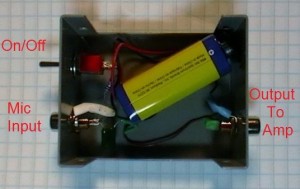
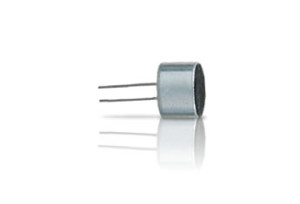
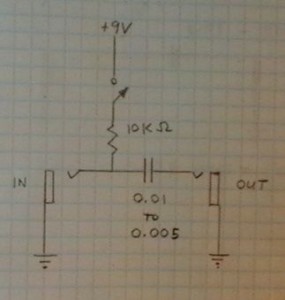
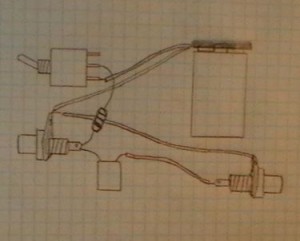
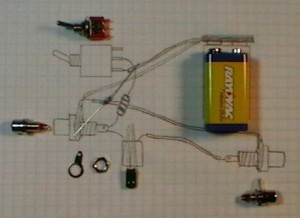
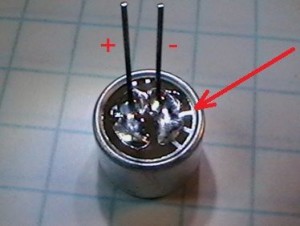
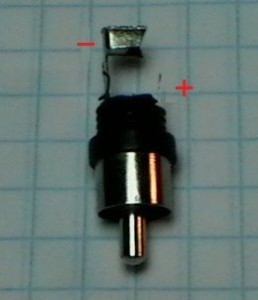
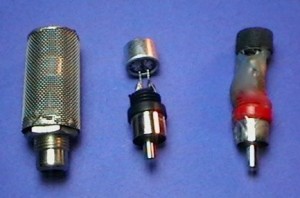
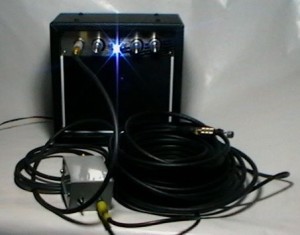
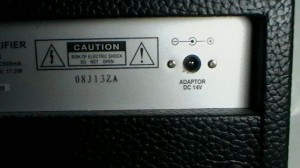
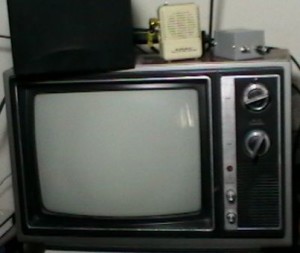








7 comments
Skip to comment form
Great article… This is a perfect little device which could be used in a wide array of possibilities – great for OPSEC, and it’s fairly easy to do with a little basic knowledge of basic electronics (and knowing how to solder). We need more ‘high tech’ prepping out there :=)
Seriously though… surveillance is (and will be) a very big deal if and when TSHTF.
Author
Ken,
Couldn’t agree more, surveillance is going to be key when TSHTF. Thanks for the comment and I’m a fan of your site too, keep up the good work. For those who haven’t been there, check out Ken’s site at: http://www.modernsurvivalblog.com
PJ
try putting a piece of course foam over the mic to knock down on wind noise, also find the focal point on a small dish and your range will increase to around 500 feet or more.
Author
Foam is a great trick, reporters use it all the time for their high end outdoor mics. Thanks for the tip and comment.
Windscreens here:
http://www.radioshack.com/product/index.jsp?productId=2103337
Available at 7 stores within 5 miles of my zip code.
The condenser mic is available at 5 of those stores. I will pic up a pack of windscreens this weekend and let you know if they fit ok.
The dish is a good idea but the pick up pattern will be directional. If you have a large property and you want to hear what’s going on over at the barn let’s say, then a two wire + shield version (balanced line) is available (schematic). This potentially should be good for a few hundred feet of belden belfoil shielded solid 2 conductor cable.
or with the mic, mic power supply and amp over at the barn with the speaker signal being run back to the farm house to an external speaker. Hope that makes sense.
I updated the Instructable to include a picture of the mic with a windscreen:
http://www.instructables.com/id/Condenser-Microphone-Power-Supply/?ALLSTEPS
Some time this week I will add the information on the 2 wire plus shield version. I need to scan my schematic and notes from 15 years ago and I don’t have a scanner.
Author
Thanks Lux for the updates, and thanks again for contributing the article.